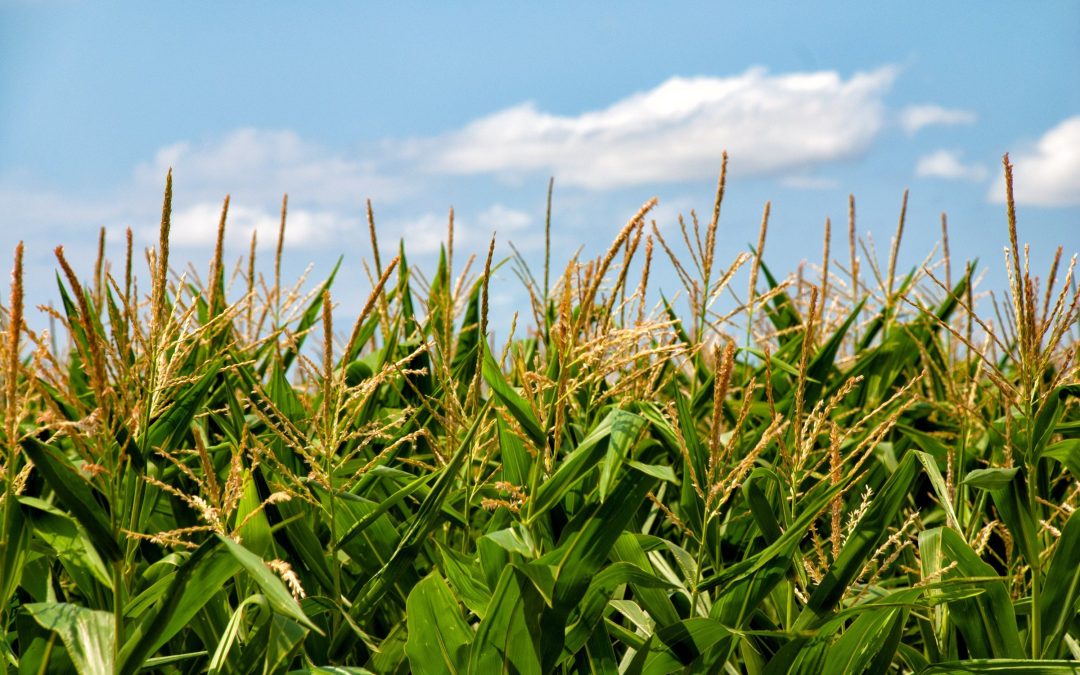BACKGROUND
Production Year: 2023
Location: Kanorado, Sherman County, Kansas
Planting Date: 6/01-6/02/2023
Harvest Date: 10/11-10/12/2023
Seed Variety: Channel 192-08
Planting Rate: 14,000 seeds/acre
Flow Device: 8-inch
TerraNet™: Corn General Wellness
Set Up: Split Field
Water availability
Goal:
Input reduction, water reduction, yield increase
Trial Results:
- 16.8% yield increase
- 18-20% increase in soil moisture
- $72.06 in additional income per acre
METHODS
- Soil type and slope were evaluated to confirm comparability between both fields (Figure 1).
- Weather and historical performance were considered during the set-up and analysis phase of the case study.
- Fertilizer rates, planting populations and dates, irrigation rates, and harvest dates remained consistent between control and treatment fields.
- Soil moisture sensors were installed at various depths within the profile to compare moisture availability in the control and treated sides of the field. These readings were collected every hour and condensed into monthly totals.
- A paired T-Test and Least Significant Difference analysis were performed on this data.
Data Collected
- Yield – Scale Tickets
- Soil Sampling (Internal)
- Satellite Imagery
- Drone Imaging
- Moisture Sensing
- Flow Meters
- Scouting – General
Soil Map Data
Soil type is the same silt-loam on both sides of the field with a 1% difference in slope between the treatment and control. The slope difference is minimal and allows for both sides of the field to act as equal comparisons.


Weather
The growing season started out with and maintained above average rainfall amounts. Throughout the entirety of the growing season, rainfall amounts were approximately double that of the typical average with temperatures staying within the normal range. With the extra rainfall, irrigation was not required as often as it would have been typically.
RESULTS
Yield

Based on the scale tickets, the UpTerra treatment generated a 16.8% increase in bushels-per-acre of harvested corn grain compared to the control field.

Bushels Per Acre
16.8% Change
Income Generation

Soil Moisture Retention
The month of August was the first month with accurate readings after the late June install. It initially showed that the treated half of the field retained less moisture than that of the control. During that same period, the water well went down on August 20th for a span of approximately 2 weeks. This left the entire field without irrigation water during the heat of the summer at a critical point of crop development, furthering the need for better moisture retention in the soil.
Within a month, however, the available soil moisture on the treated side increased 20.27% over that of the control. The improved moisture retention continued into the next month (October) with the treated side retaining 18.53% more available moisture.


Satellite Imagery
The satellite imagery taken during the 2023 growing season shows typical biomass accumulation of the control field (left) and treatment field (right) during early-season crop development. Deeper shades of green indicate more crop biomass and healthy plant growth.
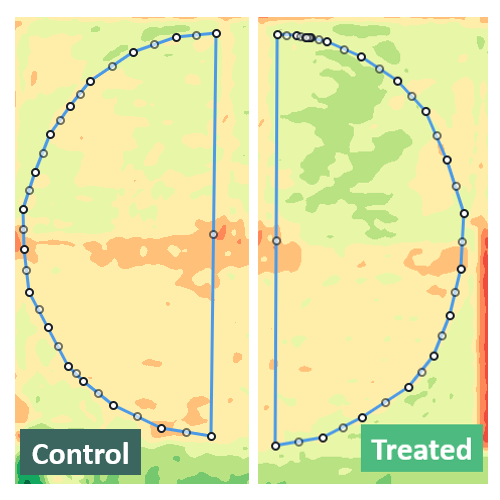
July 9, 2023
Early in the season, the treated field has a 13.06% higher NDVI value.
The treated field has a higher amount of light yellow and green, showing a higher NDVI level, indicating better plant health.
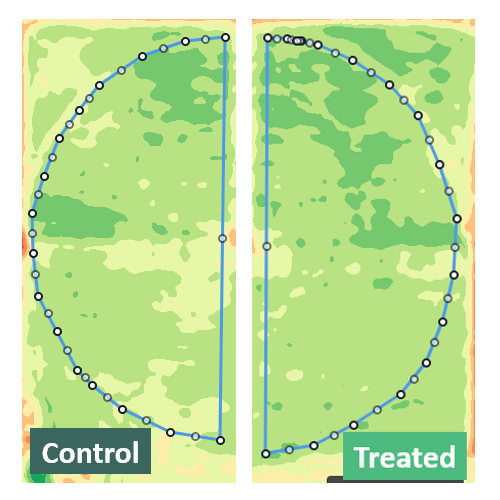
July 17, 2023
Noticeable differences continued throughout crop maturity, where the treated field maintained a 13.92% higher NDVI value
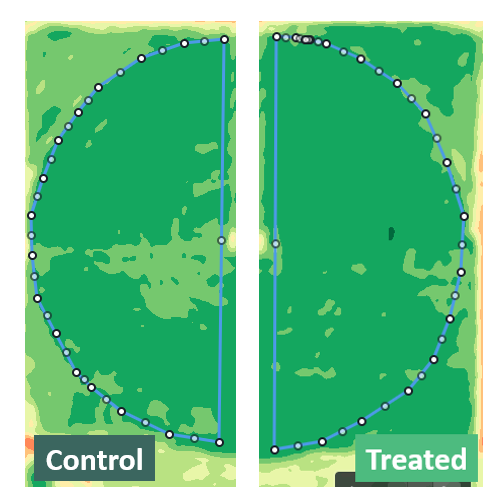
August 3, 2023
Noticeable differences continued throughout crop maturity
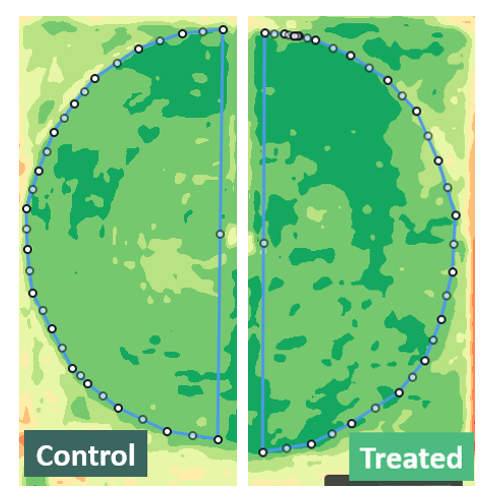
August 18, 2023
Final Satellite image before irrigation is shut off. Higher NDVI on the treated field continues
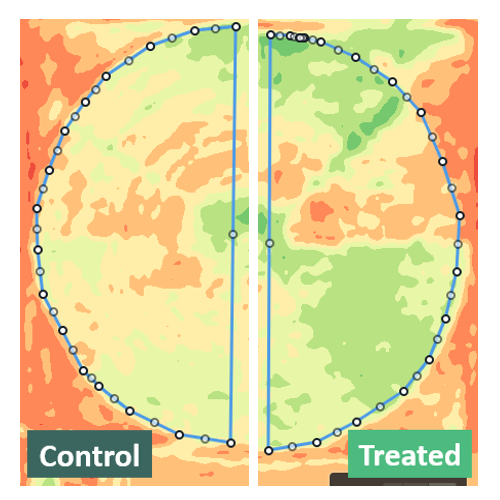
September 2, 2023
A decrease in NDVI levels is observed before harvest but 33.85% higher NDVI values indicate better moisture retention in the treated portion of the field.
The NDVI values of each side of the field are graphed below. The graph shows much earlier plant development in the treated field from the beginning and these higher NDVI values were maintained until the end of the season where the control values became closer to that of the treated. As the crop dried down and the NDVI values dropped, the treated still maintained higher values. Indicating the crop was retaining more moisture.

Agronomy Field Assessments
The treatment field’s higher NDVI values validate field observations that the UpTerra System provided:
- Greater moisture retention
- Denser root mass
- Improved plant development

July 13, 2023
Root dig comparisons between treated and control plants
Observations:
- Greater leaf area
- Increased root mass
- Taller plant height

August 24, 2023
Late season ear development (approximately 3 weeks before harvest)
Observations:
- Increased ear size
- Increased kernel counts
CONCLUSION
The results indicate that the UpTerra System had a positive effect on yield, plant development, and soil health. Specifically, there was a significant corn yield increase of 16.8%, resulting in $72.06 of additional income per acre along with an 18-20% moisture availability increase in the soil of the UpTerra treated half of the field. Throughout the season, noticeable improvements were observed in the field, including enhanced hydration, soil aggregation, taller plant height, and better root growth. Since growing practices and soil types were the same on either side of the field, the data team concluded that there was a notable effect of the UpTerra System on production for this product evaluation.
